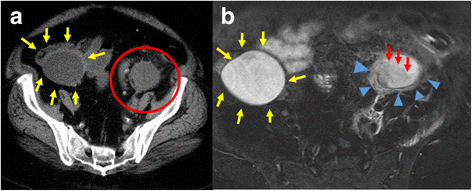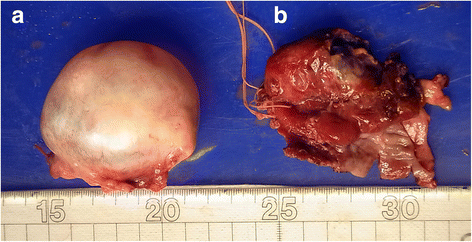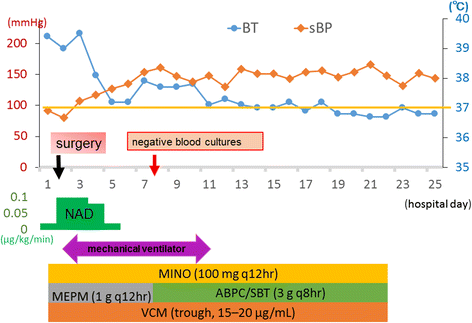An extremely rare case of tubo-ovarian abscesses involving corynebacterium striatum as causative agent
- PMID: 27686475
- PMCID: PMC5041574
- DOI: 10.1186/s12879-016-1860-0
An extremely rare case of tubo-ovarian abscesses involving corynebacterium striatum as causative agent
Abstract
Background: We present an extremely rare case of tubo-ovarian abscesses involving Corynebacterium striatum (C. striatum) as causative agent in a 53-year-old woman.
Case presentation: The patient presented with stomach pain, chills, and nausea. Her medical history included poorly controlled psoriasis vulgaris and diabetes. Laboratory and imaging findings led to diagnosis of septic shock due to tubo-ovarian abscesses. She was treated with antibiotic therapy and surgery to remove the left adnexa. Various cultures detected Prevotella spp. and C. striatum. We concluded that C. striatum from skin contaminated by psoriasis vulgaris had caused the tubo-ovarian abscesses by way of ascending infection.
Conclusions: This may be the first known case of tubo-ovarian abscesses due to C. striatum. In patients whose skin has been weakened by psoriasis vulgaris or other infections, Corynebacterium should be considered as causative microorganisms, and antibiotic therapy including vancomycin should be administered.
Keywords: Corynebacterium striatum; Psoriasis vulgaris; Tubo-ovarian abscesses; Upper reproductive tract infection.
Figures




Similar articles
-
Pyomyoma mimicking tubo-ovarian abscess: Two case reports.Case Rep Womens Health. 2021 Nov 20;33:e00372. doi: 10.1016/j.crwh.2021.e00372. eCollection 2022 Jan. Case Rep Womens Health. 2021. PMID: 34900612 Free PMC article.
-
Corynebacterium striatum meningitis combined with suspected brain and lung abscesses: a case report and review.BMC Infect Dis. 2020 Jun 1;20(1):389. doi: 10.1186/s12879-020-05114-3. BMC Infect Dis. 2020. PMID: 32487026 Free PMC article. Review.
-
Renal and perinephric abscesses involving Lactobacillus jensenii and Prevotella bivia in a young woman following ureteral stent procedure.J Community Hosp Intern Med Perspect. 2020 Mar 3;10(2):162-165. doi: 10.1080/20009666.2020.1742494. J Community Hosp Intern Med Perspect. 2020. PMID: 32850056 Free PMC article.
-
Risk factors for the development of tubo-ovarian abscesses in women with ovarian endometriosis: a retrospective matched case-control study.BMC Womens Health. 2021 Jan 30;21(1):43. doi: 10.1186/s12905-021-01188-6. BMC Womens Health. 2021. PMID: 33516203 Free PMC article.
-
Perimenopausal pneumococcal tubo-ovarian abscess--a case report and review.Infect Dis Obstet Gynecol. 2004;12(1):27-30. doi: 10.1080/1064744042000210366. Infect Dis Obstet Gynecol. 2004. PMID: 15460193 Free PMC article. Review.
References
LinkOut - more resources
Full Text Sources
Other Literature Sources
Miscellaneous

